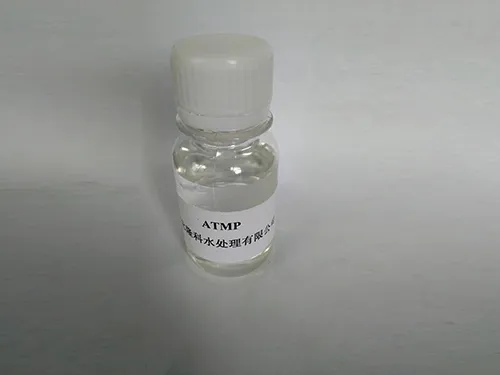Scale and Corrosion Inhibitors: Key to Industrial Water Treatment
Scale and Corrosion Inhibitors are essential key chemicals in industrial water treatment. With the acceleration of industrialization, industrial water consumption such as cooling water and boiler water is increasing day by day. Impurities such as dissolved salts, suspended solids, and microorganisms in these water bodies can easily cause scaling and corrosion, seriously affecting the operational efficiency and service life of equipment, and even causing safety accidents. Therefore, effective control of scaling and corrosion is an important issue to ensure stable operation of industrial production, and Scale and Corrosion Inhibitors have emerged in this context.

Scaling refers to the precipitation of calcium and magnesium ions in water under high temperature or high pH conditions, forming deposits that adhere to surfaces such as heat exchangers and pipeline walls, reducing heat transfer efficiency and increasing operating costs. Corrosion refers to the electrochemical or chemical damage process of metal materials in a water environment, resulting in a decrease in the strength of equipment materials and ultimately failure. The two often work together to accelerate equipment damage.
Scale and Corrosion Inhibitors inhibit scaling and corrosion through multiple mechanisms
Scale and corrosion inhibitor chemicals mainly function through the following ways: firstly, lattice distortion, which changes the crystal structure by adsorbing onto the surface of crystal nuclei, preventing the formation of dense and hard scale layers, thus forming loose and easy to remove precipitates; The second is the dispersing effect, which disperses small particles in water to prevent their aggregation and precipitation; The third is chelation, which forms soluble complexes with calcium and magnesium ions, reducing their concentration and inhibiting scaling; The fourth is the threshold effect, which can effectively suppress the occurrence of scaling even below the theoretical saturation concentration.
The mechanism of action of Scale and Corrosion Inhibitors is more complex
Common types include oxidation type corrosion inhibitors, passivation type corrosion & scale inhibitors, adsorption type corrosion inhibitors, etc. Corrosion&scale inhibitors form dense oxide films by oxidizing metal surfaces, hindering further corrosion development; Passivation type corrosion inhibitors promote the formation of passivation films on metal surfaces, improving their corrosion resistance; Adsorption type corrosion inhibitors form a protective film by adsorbing onto metal surfaces, isolating the metal from the corrosive medium.
The selection of Scale and Corrosion Inhibitors needs to be comprehensively considered based on factors such as water quality characteristics, equipment materials, and operating conditions
Different types of corrosion scale inhibitors have their own advantages and limitations for different corrosion and scaling mechanisms. For example, for high hardness water quality, it is necessary to choose scale inhibitors with stronger chelating ability; For water containing high concentrations of chloride ions, it is necessary to choose corrosion inhibitors that are resistant to chloride ion corrosion.
With the increasing awareness of environmental protection, the development trend of Scale and Corrosion Inhibitors is also paying more attention to green environmental protection. Low toxicity, biodegradable, and phosphate free Scale and Corrosion Inhibitors are gradually becoming mainstream. At the same time, the application of composite Scale and Corrosion Inhibitors is becoming increasingly widespread, which can simultaneously suppress multiple types of corrosion and scaling, improve treatment efficiency, and reduce operating costs.
In summary, hedp scale inhibitorHedp is an important guarantee for ensuring the safe and stable operation of industrial water systems. By delving into its mechanism of action and selecting appropriate agents based on actual conditions, it is possible to effectively control scaling and corrosion, extend equipment lifespan, improve production efficiency, and ultimately achieve sustainable development.
Scale and Corrosion Inhibitor FAQs
What is the main function of Scale and Corrosion Inhibitors?
Scale inhibition function: By interfering with the crystallization process (such as chelating calcium and magnesium ions or dispersing scale particles), it prevents inorganic salts such as calcium carbonate and calcium sulfate from depositing on the surface of pipelines or equipment.
Corrosion inhibition function: Form a protective film (physical adsorption or chemical film formation) on the metal surface, isolate the contact of water, oxygen, or corrosive ions (such as Cl ⁻), and slow down electrochemical corrosion.
What are the common types of Scale and Corrosion Inhibitors?
Inorganic substances: polyphosphates (such as sodium hexametaphosphate), silicates, zinc salts, etc.
Organic category:
Phosphonates (such as HEDP, ATMP);
Polymers (such as polyacrylic acid PAA, maleic anhydride copolymers);
Azoles (such as benzotriazole BTA, specifically designed for copper corrosion).
Composite formula: Multiple ingredients are compounded to synergistically enhance efficiency (such as phosphonates+polymers+dispersants).
How to choose the appropriate Scale and Corrosion Inhibitor?
The following factors need to be considered:
Water quality: hardness, pH, Cl ⁻, SO ₄² ⁻ content, turbidity, etc;
System type: circulating cooling water, boiler water, reverse osmosis (RO) membrane, etc;
Material compatibility: Carbon steel, copper, stainless steel and other materials need to be matched with different inhibitors;
Environmental requirements: such as phosphorus free formula (applicable to strict emission standards).
How to determine the dosage of Scale and Corrosion Inhibitors?
Usually calculated based on system water volume, Cycle of Concentration (COC), and water quality analysis report;
The initial dosage may be high (to establish a protective film), and subsequent adjustments will be made by monitoring the corrosion rate (such as mpy) and the thickness of the scale layer;
Excessive dosage may lead to drug waste or secondary deposition (such as excessive generation of Zn (OH) ₂ from zinc salts).
What issues should be noted when using Scale and Corrosion Inhibitors?
Compatibility testing: whether there is a reaction with existing agents (such as fungicides) in the system;
Monitoring and maintenance: Regularly check pH, conductivity, corrosion coupons, and analyze scale samples;
Temperature and flow rate: High temperature or low flow rate may affect the film-forming effect of the drug;
Environmental Protection and Safety: Some phosphorus containing chemicals may cause eutrophication and must comply with local regulations.
-
Water Treatment with Flocculant Water TreatmentNoviceJun.12,2025
-
Polymaleic AnhydrideNoviceJun.12,2025
-
Polyaspartic AcidNoviceJun.12,2025
-
Enhance Industrial Processes with IsothiazolinonesNoviceJun.12,2025
-
Enhance Industrial Processes with PBTCA SolutionsNoviceJun.12,2025
-
Dodecyldimethylbenzylammonium Chloride SolutionsNoviceJun.12,2025





